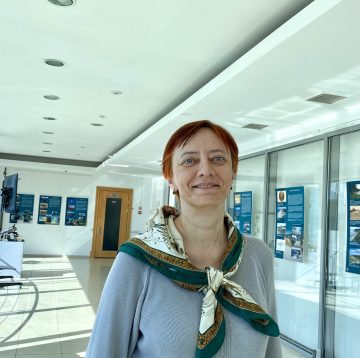The land use system of the Kaliningrad region

Olga Vinogradova
Ph.D., Senior Scientist
Museum of the World Ocean
Russia
Regional environmental management systems are formed and developed as a result of the synergistic action of a complex of factors: internal and external political and economic situation, natural conditions and resources of the territory, the technological level of the economy, the ecological situation, demographic and social processes in the region, etc. A change in one of these factors entails a more or less significant transformation of the nature management of the region.
In the early 1990s, there was a radical change in the situation in the land use in Russia in general and in the Kaliningrad region in particular:
- in a short period, there was a change in the structure of the economy from a command to a market one;
- destruction of existing and adjustment of new economic and technological ties between regions;
- unemployment, impoverishment of the population, etc.
These events had a particularly strong negative effect on the Kaliningrad region due to its exclave position.
The main directions of transformation of the functional structure of nature management in the Kaliningrad region since the early 1990s until 2018-19:
- Agricultural land has been slowly declining since the early 1980s and by 1990 accounted for approximately 63% of the region’s territory. In 1994, it dropped to 15%. Re-development of fallow lands began in 2010-11, as a result of the action of state and regional programs to support agriculture (up to 28% in 2019). The complexity of this process is associated with the need to reconstruct reclamation networks, including polders.
The Kaliningrad Region demonstrates the highest rates of agricultural land growth in the North-West Federal District of Russia.
At the same time, technologies in the agricultural sector of the region have grown and the yield of agricultural crops has doubled on average over 30 years. This makes it possible to limit the development of fallow lands. Their area is currently about 50% of the region’s territory. Fallows, along with protected areas, forests and bogs, constitute the ecological framework of the region. The area of land with the status of nature conservation increased during this period from 16 to 24%.
- The area of logging in the region has decreased by four times in 30 years, industrial logging stopped in the 1980s. The main process in forestry today is sanitary felling and reforestation. After 1992-94 the area of planted forests had been falling for several years, but by 2014 it had again recovered to the 1990 level.
- In the early 1990s, a rapid increase in the area of land for private gardens and orchards began. In the early 2000s, most of the tracts of these lands have passed into the category of cottage settlements. They are localized near Kaliningrad, cities and villages on the sea coast.
- The expansion of the area of multistorey and low-rise buildings in cities and towns is observed mainly in the western part of the region – Kaliningrad, satellite towns, resort villages and cities: in 1990 the area of settlements were 2.3%, in 2017 – 3.4%.
- The density of roads and railways in the region is one of the highest in Russia. Over the past 30 years, the length of roads and the area of transport infrastructure in the region has grown, although not significantly (from 1.5 to 1.7%). At the same time, the role of inland river transport has significantly decreased.
- Lands for the extraction of building materials and other minerals occupy in the region no more than 0.5% of the territory. Peat mining was almost completely stopped back in the 1980s. Amber mining before the 1990s was focused on a quarry near the village of Yantarny. In the early 2000s, illegal mining of amber has become widespread, but it has now been discontinued.
- The area of land for defense purposes has decreased over the past 30 years.
Thus, the main trends in the change in the structure of nature management in the region are due to the following processes:
- expansion of residential and transport lands (artificial);
- greening nature management, reducing the share of intensively used agricultural land, increasing the area of nature conservation areas;
- expansion of the areas of ecological restoration at the expense of fallow lands, restoration of bog ecosystems;
- an increase in the load on coastal natural landscapes due to an increase in the recreational load.
Thus, a polarization of the region’s landscapes occurs: on the one hand, the proportion of anthropogenic landscapes decreases with an increase in the intensity of their economic use (from about 70 in 1990 to 30% in 2017-19), on the other hand, the proportion of landscapes of ecological restoration is growing (from 15 to 50%, respectively).
Expert article 3249
>Back to Baltic Rim Economies 3/2022
To receive the Baltic Rim Economies review free of charge, you may register to the mailing list.
The review is published 4-6 times a year.
